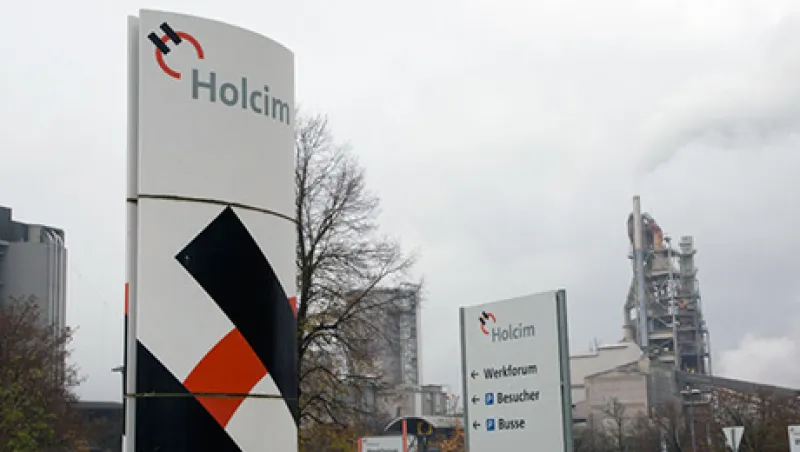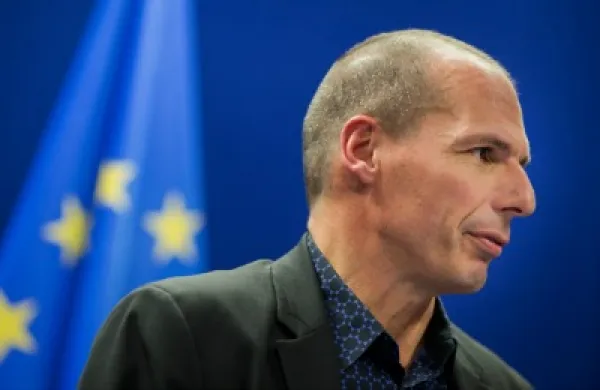The biggest have agreed to get much bigger in the global cement market, but first they need to get smaller to satisfy regulators. That is the conundrum facing Bruno Lafont, CEO of top cement producer Lafarge, as he looks to consummate the $40.6 billion merger with No. 2 Holcim announced in April.
The two companies bill the transaction as a merger of equals involving a one-for-one swap of Lafarge stock into Holcim shares and dual management from Lafarge’s Paris headquarters and Holcim’s hometown of Jona, Switzerland. The 58-year-old Lafont, who joined Lafarge’s finance department after graduating from France’s École nationale d’administration in 1983 and worked his way up the corporate ladder, would hang on to the CEO’s job, under incoming Holcim chairman Wolfgang Reitzle.
That is if European Union regulators allow the transaction to close in early 2015, as both companies hope. A combined Lafarge-Holcim would generate some €32 billion ($40 billion) in annual sales and churn out four times as much product as its nearest global competitor, Germany’s HeidelbergCement. “The deal creates a group that is very diversified, where no single country accounts for more than 10 percent of the business and where 60 percent of revenue comes from emerging markets,” says Michael Zaoui, the London-based partner at rising European investment banking star Zaoui & Co. , which, along with Rothschild, advised Lafarge. The two companies promise €1.4 billion in annual cost savings once they combine operations.
Lafont, who took the chief executive’s chair at Lafarge in 2006, kicked off his tenure with a sharp tilt toward emerging markets: the €10.2 billion acquisition of Egypt’s Orascom Construction Industries cement group, announced in late 2007. Zaoui, who worked for Morgan Stanley at the time, advised on that deal too. Lafont has steadily invested in his company’s Chinese joint venture with local partner Shui On Construction and Materials despite signs of overcapacity as China’s building explosion cools. He also doubled down on the U.S. early on, buying out minority shareholders in Lafarge North America.
A combination with Holcim would fill some important gaps around the world for Lafarge, most importantly in India, but the two companies’ overlap on their home turf in Europe is too big to pass antitrust muster. So Lafont and his outgoing Holcim counterpart, Bernard Fontana, are currently overseeing the disposal of as much as €7 billion in assets, two thirds of it on the home continent. Despite the tepid economic outlook in Europe and globally, Holcim and Lafarge have received some 60 bids for all or part of the cast-off subsidiaries, according to Holcim CFO Thomas Aebischer, who is slated to stay on with the combined group.
The European Commission has set December 15 as a deadline for approving the deal or sending it back for further scrutiny. Zaoui — whose firm will share in an estimated $116 million in total fees, along with Rothschild and Holcim adviser Goldman Sachs Group — says the two companies aren’t working to such a fixed schedule but hope to gain approval and close in the first quarter of 2015. Competition watchdogs in Canada and Brazil, among other places, are also probing the megamerger.
Investors have yet to get excited about Lafont’s bold stroke. Lafarge shares are basically flat since news of the proposed merger began to seep out in early April, a trend that mirrors the Euro Stoxx 50 Index. But Lafarge’s boss intends to be ideally positioned for the next global construction boom, if it ever comes.
Top 10 Deals of 2014
- Kinder Morgan Goes All In
- Comcast Faces Screen Test
- Actavis Realizes Bigger Pharma Ambitions
- Medtronic, Covidien Home In on Tie Up
- Lafarge and Holcim Pour It On
- Alibaba Sets IPO Record with NYSE Debut
- Facebook's Data-Driven Takeover of WhatsApp
- Altice Turns Paper Profit
- Eurobank Ergasias Spearheads a Greek Banking Revival
- Bond Issue Boosts U.K.'s Renminbi Trading Cred





